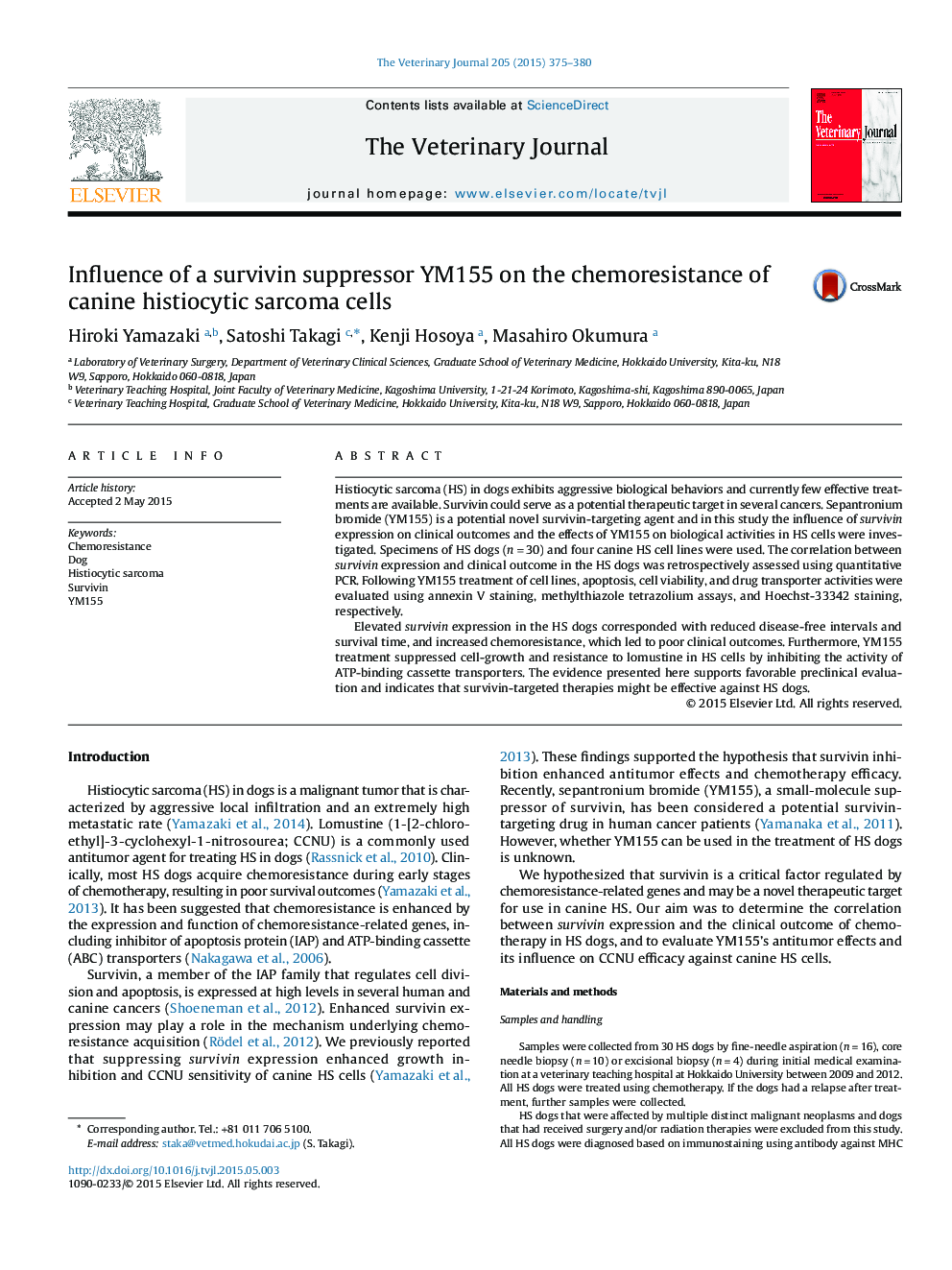| Article ID | Journal | Published Year | Pages | File Type |
|---|---|---|---|---|
| 2463878 | The Veterinary Journal | 2015 | 6 Pages |
•Effect of YM155 on chemoresistance of histiocytic sarcoma (HS) cells was assessed.•Relation between survivin expression and clinical outcome in HS dogs was assessed.•Elevated survivin expression was related with poor clinical outcomes in HS dogs.•YM155 enhanced apoptosis and chemosensitivity in all HS cell lines.
Histiocytic sarcoma (HS) in dogs exhibits aggressive biological behaviors and currently few effective treatments are available. Survivin could serve as a potential therapeutic target in several cancers. Sepantronium bromide (YM155) is a potential novel survivin-targeting agent and in this study the influence of survivin expression on clinical outcomes and the effects of YM155 on biological activities in HS cells were investigated. Specimens of HS dogs (n = 30) and four canine HS cell lines were used. The correlation between survivin expression and clinical outcome in the HS dogs was retrospectively assessed using quantitative PCR. Following YM155 treatment of cell lines, apoptosis, cell viability, and drug transporter activities were evaluated using annexin V staining, methylthiazole tetrazolium assays, and Hoechst-33342 staining, respectively.Elevated survivin expression in the HS dogs corresponded with reduced disease-free intervals and survival time, and increased chemoresistance, which led to poor clinical outcomes. Furthermore, YM155 treatment suppressed cell-growth and resistance to lomustine in HS cells by inhibiting the activity of ATP-binding cassette transporters. The evidence presented here supports favorable preclinical evaluation and indicates that survivin-targeted therapies might be effective against HS dogs.
